General Nathaniel Prentiss Banks
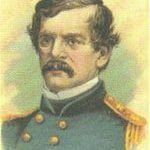
At the end of 1862 he was assigned to command a strong expedition to New Orleans, and upon arrival was given command of the Department. Baton Rouge was occupied, and in 1863 he attacked Port Hudson which capitulated after severe fighting on 9th July. In the spring of the following year it was planned to go up the Red River to take control of Western Louisiana. He joined up with General Smith but at Savine crossroads they were defeated by General Taylor. With the river water falling, the supporting gunboats were in danger of being lost too, but eventually the entire force fell back and avoided complete disaster. Banks failure was severely criticized, and although later exonerated he resigned his commission in May 1864.
General Pierre Gustave Toutant Beauregard

Born of French stock, Beauregard was appointed to the defenses of Charleston by President Davis. On April 11th 1861 he demanded the surrender of Fort Sumter. The next day the first gun was fired, and on the 13th the Fort surrendered. At Shiloh he assumed command after the death of A. S. Johnston, but was criticized in some quarters for not turning victory into a rout. In the summer of 1863 he defended Fort Wagner and Charleston against Gillmore’s assault. Charleston held, and in April 1864 his command was moved to defend Richmond where he fought Butler. On 17th February 1865 he directed the evacuation of Charleston, and in the April of that year he surrendered his force to General Sherman.
General Braxton Bragg
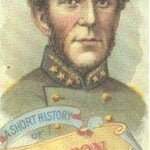
Appointed Commander of the whole of the Confederate Army of the West, after General Beauregard, his Kentucky campaign of 1862 began with high hopes. But at the end it achieved little, for after the Battle of Nashville he retreated and his depleted force gave ground to Rosecrans’ army. At Chickamauga a total rout of the Federals followed, but Bragg committed the error of detaching Longstreet from his force. Grant, re-assessing the situation, attacked Bragg at Mission Ridge and the Confederates were routed. President Davis was shocked at the turn of events, and dismissed Bragg from command. One Southern newspaper summed up the public’s confidence in Bragg when it announced “General Bragg has been appointed to command at Wilmington: Goodbye, Wilmington!”
General Don Carlos Buell
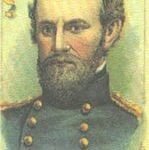
On 12th June he took command of the district of Ohio, but was threatened by an advance from General Bragg’s Confederate Army. With his lines of communication threatened he was forced to retreat towards Louisville. A long and tiresome journey ensued, racing to get to Louisville before they were cut off. Arriving on 24th September he re-grouped. Pursuing the enemy, he brought them to battle at Perryville. A fierce action saw Buell’s forces fare better, and by the following day the Confederates were withdrawing to Harrisburg. From here they were able to retreat slowly to the Cumberland Gap and escape entrapment themselves. He was criticized severely for allowing their escape. He was ordered to transfer his command to Rosecrans, and resigned his commission on 1st June 1864.
General Amerose Everett Burnside

In February 1862 he led the Coast Division which captured Roanoke Island. His success was noted, and he was offered command of the Army of the Potomac. At Fredericksburg he hoped to take the Confederates unawares, but at the Rappahannock he was repulsed with over 1200 losses. He was removed from command, but in the August of 1863 he was asked to move with 1800 men to take possession of the Cumberland Gap. But this too was unsuccessful when Longstreet forced him back to Knoxville. He later fought under Grant at the Wilderness and Cold Harbour, but at the action around Petersburg he was accused by General Meade of disobedience. A Court of Inquiry found him answerable and he resigned from the Army in April 1865.
General Benjamin F. Butler
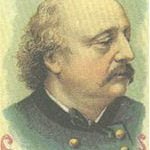
On 1st May 1862 Butler’s land forces took possession of the city of New Orleans. The strict administration he then imposed aroused intense resentment. His hanging of William Mumford for taking down the United States flag, together with hi “Order No. 28” to prevent women insulting soldiers, caused Jefferson Davis to proclaim him an outlaw. A further incident involving the seizing of money from the Dutch Consulate saw him recalled to Washingt0on. Following an incident at Fort Fisher where his forces failed to press home their attack, he was removed from command. He resigned hi commission and went into political life in Massachusetts.
General Jubal Anderson Early
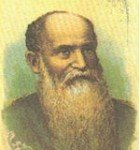
It was said of “Old Jube” that while many people questioned his judgment, his courage was never in doubt. Sent by Lee in the June of 1864 to confront Hunter in the Shenandoah, the maneuvers eventually resulted in an engagement at Monocacy Bridge where the Federals were routed. Moving forward, Early advanced on Washington, reaching Rockville on 10th July. He was in sight of the Capitol and the firing of his troops could be heard at The White House, but on the night of the 12th he retreated. It was later conceded that, had he attacked, the city would probably have fallen. In October 1864, after he was defeated by Sheridan at Cedar Creek. Lee relieved him of command.
General Nathan Bedford Forrest
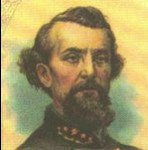
At the outbreak of war, Forrest was asked by Governor Harris of Tennessee to equip and raise a regiment of cavalry. His force quickly became expert and undertook several raiding excursions. At Murfreesboro on 13th July 1862 he demonstrated an art for tactical awareness that was second to none. He fought bravely at Chickamauga and was responsible for capturing Fort Pillow. His cavalry continued to harass the Union forces whenever the opportunity arose, but at Gainesville on May 9th 1865 he was compelled to surrender. Considering his achievements of rank and status, he was particularly bad at spelling and grammar as his surviving war documents will testify.
General James Abram Garfield

He was a strong advocate for freedom from slavery, representing the counties of Summit and portage in the Senate of Ohio. At the outbreak of war he joined Buell at Louisville, Kentucky, and cleared Eastern Kentucky of Confederate forces. He fought at Shiloh and Corinth and at Chickamauga was promoted to Major General for gallant action. In December 1863 he was asked by Lincoln to take up his entitled seat in Congress. Over the years he established himself as the undisputed leader of the Republican Party, and in 1880 received the Presidential nomination. He defeated Winfield Hancock by a large majority, but on 2nd July 1881, as President, he was shot twice by Charles Guiteau. He died of his wounds on 19th September 1881.
General Ulysses S. Grant

General Grant, Commander of the Union Army in the Civil War, and later to be twice President of the United States, was born at Point Pleasant, Clermont County, Ohio on 27th April 1822. In 1862 his capture of Forts Henry and Donelson came at a time of Northern failure on all other fronts. His successful capture of Vicksburg after a long and difficult campaign also added to his standing, and in the March of 1864 he was given overall command of the Union’s forces. His strategy was uncompromising and called for sustained and systematic advance on all fronts. Tying down Lee at Richmond he ordered Sherman to “march to the sea”. Lee was forced to evacuate Richmond and compelled to surrender, which he did on 9th April 1865.
General Henry W. Halleck
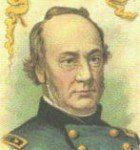
Appointed by President Lincoln to command the Department of the Missouri, his area contained many Southern sympathizers within it, but from his headquarters at St. Louis, he set about suppressing the disloyal factions and reinforcing the defenses of the city. In 1862 he was given command of the Departments of Kansas and Ohio. He was later called to Washington, where he was made General-in-Chief of all the armies of the North. Unfortunately, he was soon to be outdone by the successes achieved by General Grant who was awarded the “revived” rank of Lieutenant General of all the armies. Outranked, he conceded that Grant was now Commander-in-Chief. He continued in service until March 1869.
General Winfield Scott Hancock
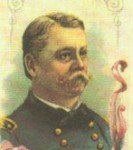
At the outbreak of war he was appointed Brigadier-General of volunteers. It was said that “he rendered a most timely and valuable service” in organizing the Army of the Potomac. Under McClellan he served in both the Peninsular and Maryland campaigns and was wounded at Gettysburg, having been placed in command there by Meade. After Cold Harbour he was appointed Brigadier-General as recognition of his distinguished service. But an incident at Reams Station, where his unprepared force was routed, brought his active service career to an end. He was recalled to Washington where he remained until the end of the war.
General William J. Hardee
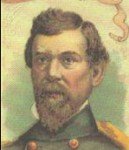
Sent to Arkansas to serve under General Polk in June 1861, he already had the reputation of being a conspicuously brave soldier. Under Joseph E, Johnston he played a prominent part in opposing Sherman’s advance on Atlanta. But at Charleston, where he was in command, he was compelled to evacuate the city as the garrison was needed as part of a concentrated force capable of stopping Sherman. President Davis was aghast that his favorite city was abandoned. Hardee’s force was depleting day by day, but he joined with Joe Johnston at Bentonville. Arriving on the field of battle late, he personally led a charge which took the enemy’s breastworks. “That was nip and tuck” he said, “and for a long time I thought tuck had it”. His force surrendered at Durham Station, N.C. on 26th April 1865.
General John Bell Hood
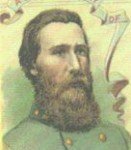
John Bell Hood was President Davis’s favorite ‘fighting’ general. He was undoubtedly brave, but when he was given command of the forces defending Atlanta he was perhaps ‘out of his depth’. A Northern critic scathingly said of him that he head “abundant courage but scant brain with which to balance it”. And so it seemed when, tactically out-maneuvered, he abandoned the South’s commercial centre to the North. It was also said that, at Nashville, he was about to publish a victory speech when the centre of his line broke and his force lost over 50 artillery pieces. As ‘Davis general’ there seems little doubt that he commanded for far longer than his abilities merited. He survived the war but died of yellow fever in 1879.
General Joseph Hooker

“Fighting Joe Hooker” was appointed Leader of the Army of the Potomac after the reverse at Fredericksburg. Lincoln recognized Hooker’s ambitious nature and advised him to “beware of rashness”. At his first engagement however, at Chancellorsville, he was put out of action at a critical time when he was stunned by a near miss cannonball. There was to follow an unexpected turn of events when it was realized that Lee was intent on invading via Pennsylvania. Marching his army north to meet the threat, Hooker asked for additional forces to be sent from Harpers Ferry. His request was denied, and he resigned his command. Although recalled to service later in the year, he had effectively ended his own career.
General Thomas Jonathan Jackson
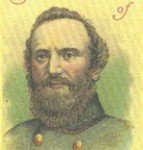
Described as lee’s most trusted and loyal lieutenant, “Stonewall” Jackson often showed a coolness under fire that defied logic. When asked how this was possible he put it down to a religious belief that taught him “to feel as safe in battle as in bed”. At Chancellorsville in the spring of 1863 he launched a surprise attack on the rear of General Hooker’s army. He drove them from the field into an area of dense vegetation known as the Wilderness. However, the thickness of the undergrowth and bad visibility was to prove his undoing, for on the following day, while on a reconnaissance, his party were fired upon by units of their own side. He was hit three times and was to die of his wounds eight days later. His loss was a severe blow to Lee’s chain of command.
General Albert Sydney Johnston
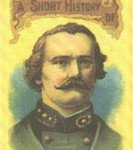
Appointed Commander of the Department of the Mississippi, he resolved to protect Tennessee, but a lost action by Crittenden, fought at Fishing Creek, compromised Johnston’s entire force. Grant exploited the situation and commenced an assent of the Tennessee River. Fort Henry fell on 4th February 1862, forcing Johnston to send reinforcements to defend Fort Donelson, but when that also fell, Nashville itself became untonable. Johnston retreated to Murfreesboro where he was joined by Beauregard. Here, their combined force of 40,000 were turned to attack Grant, and the Battle of Shiloh ensued. It was a victory for the South, but Johnston perished when a shot pierced the calf of his leg and he bled to death.
General Joseph Eggleston Johnston

He was considered by many to be the true military genius of the Confederacy. On 18th July 1861, he commanded at Manassas, and achieved a stunning victory. At Seven Pines, in the May of 1862, he was again victorious, although he was badly wounded. In December 1863 he took command of the Army of Tennessee, but soon a series of secret intrigues were started against him. Bragg accused him of being ready to give up Atlanta and, although untrue, he was removed from command. In March 1865 he assembled what few troops he could and attacked the Federals at Bentonville. They gave the Federals a bloody nose but could not stop the junction of Sherman’s and Schofield’s forces. After Lee’s surrender, Johnston met with President Davis at Greensboro where they decided to end the war.
General Robert E. Lee
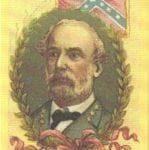
Born of a famous military family in the state of Virginia, Robert Lee graduated from West Point in 1829. In 1852 he was appointed to the command of the West Point Military Academy and so elevated the Academy in status that it became equal to the very best that Europe had to offer. At the outbreak of war he resigned his commission and pledged his support to the Southern cause. In March 1862 he was put in charge of the “conduct of military operations in the armies of the Confederacy”. A brilliant strategist, his ability to divide his force and win stunning victories was legendary. This respected general surrendered his force at Appomattox Courthouse on 9th April 1865. as the hero of the South, he went on to promote a harmonious peace and was granted a Free Pardon in 1868.
General James Longstreet
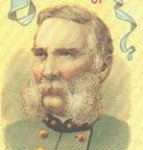
A capable general and a realist, Longstreet was often critical of Lee’s tactics, for although many brilliant victories were achieved, casualties were invariably high. At Gettysburg, when in command of the Confederate left, he was once again critical of Lee’s tactics and several heated arguments between the two men were witnessed by fellow officers. The slaughter that followed, especially that of Pickett’s troops, had a profound effect on him. He later wrote that “Gettysburg was one of the saddest days of my life”. After the war he actively participated within the reconstructed fabric of Government and lived out the rest of his life in New Orleans.
General John Bankhead Magruder
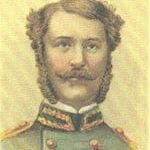
Given the task of defending the Peninsular and protecting Richmond, Magruder, with only 11,000 men, faced McClellan’s force of some 118,000. Vastly outnumbered, Magruder was in his element. He caused such a demonstration with his meager force that to McClellan there appeared to be a vast army ranged against him. In October 1862 he was placed in charge of the Confederate forces in Texas and resolved to recapture Galveston. He devised a combined assault involving naval support, and took it after fierce resistance. He remained in command in Texas until the war’s end when he went to serve with Maximilian in Mexico. In 1869 he returned to Texas to reside in Houston.
General George B. McClellan

In 1861 a series of rapid promotions had seen McClellan attain the highest rank as Commander of all the armies of the United States. Given the task of carrying the fight to the south, he was accused of taking too long in getting the army ready for action. Embarking on the Peninsular campaign, he was criticized for leaving Washington unprotected, and was relieved of his rank of Commander-in-Chief. In the Peninsular he continued to receive adverse comments. Over-cautious to a fault, he was relieved of his after a visit by President Lincoln, who had established that his 80,000 men were far superior in number to that of the enemy. Sent to New York to await orders, he resigned his commission on 8th September 1864.
General Irwin McDowell
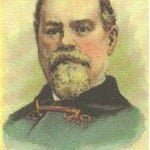
Given command of the Army of the Potomac he was ordered to march against Beauregard, who was gathering at Manassas Junction. The battle that followed resulted in a sever reverse for the Army of the Potomac who retreated in the utmost confusion back to Washington. Needless to say McDowell’s reputation was in tatters. Sherman said that it was “one of the best planned battles and one of the worst fought”. Removed from command, he was given the First Army Corps. He went on to serve under Pope in Northern Virginia, but in the September of 1863 was retired from active service. He retired from the Army in 1882 and went to live in San Francisco.
General George Gordon Meade

Meade was an able general who rendered distinguished service, particularly at the Battles of South Mountain and Antietam. His reputation for bravery was enhanced at Fredericksburg where he had two horses shot from under him. He was given command of the Army of the Potomac upon the resignation of General Hooker, and after Gettysburg he was made a Brigadier-General in the Regular Army. It is true to say that under Meade’s command the Army of the Potomac suffered no significant reverses. Grant recognized this fact and kept him in place once he had been appointed Commander-in-Chief. In August 1864 Meade was promoted to Major-General. He went on to serve in various Army departments up until his death from pneumonia in 1872.
General George Edward Pickett

Pickett commanded an infantry division made up entirely of Virginians. At Gettysburg, Lee asked him to lead his 4900 men in a frontal assault. At 1:30 in the afternoon they charged forward, but it was a disaster. Men were shot to places as they tried to breach the federal defenses. One small group of about 150 did succeed, but they were soon overwhelmed and the main attack petered out. Pickett reported the outcome to Lee. “General”, he said, “my noble division has been swept away”. Pickett was undoubtedly brave, and led by example, but it was said that the loss of his men, the fighting cream of Virginia, broke him. He died after the war at Norfolk Va. on the 30th of July 1875.
General Leonidas Polk

Polk was a unique figure for, not only had he studied at West Point, he had, at the age of 32, become an ordained Bishop. Resuming his military career with the permission of the Church he defeated Grant at Belmont and was victorious at Perryville. But controversy was to follow at Chickamauga when, on the morning of 13th September 1863, Polk was expected to attack Crittenden’s force. His failure to do so resulted in him being removed from command. Many felt that he had been made a scapegoat for Bragg’s own lack of tactical awareness. Polk was killed in action at Pine Mountain in June 1864.
General William Stark Rosecrans
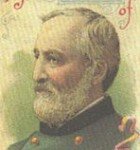
In 1861 he was appointed to command the Department of the Ohio. A successful defense of Western Virginia was followed by his appointment to command the army of the Mississippi. Successful at Iuka, he was next appointed to the Department of the Cumberland, and by the June of 1863 a brilliant campaign had forced the Confederates out of Middle Tennessee. During August he pushed across the Cumberland Mountains and Tennessee River. The resulting battle of Chickamauga was a disaster for Rosecrans, whose force was split due to a misunderstanding of orders. His last active service was with the Department of the Missouri when he pushed Sterling Price’s army back into South West Arkansas. He was eventually placed on “waiting order” at Cincinnati.
General Phil Sheridan

Appointed Commander of the Army of the Shenandoah, he successfully removed the enemy from the valley of Virginia, taking over 5000 prisoners during his advance, but on being called to Washington, the Confederates suddenly counter-attacked at Cedar Run. Rushing back to his command, his presence was able to stem the tide and once more throw the Confederate forces into full retreat. This exploit so immortalized Sheridan in the eyes of the North that he was awarded the highest accolades and given the rank of Major General in the Regular Army. He was indeed the most ablest of general; his bravery, skill and inspirational leadership were fundamental to the victory of the North.
General W. T. Sherman
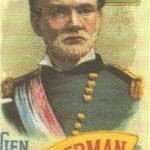
It was said that General William Tecumseh Sherman displayed the superior qualities of a soldier and scholar combined. After Vicksburg in July 1863, he was made a Brigadier General, and after a successful campaign involving the Battle of Mission Ridge and the relief of Burnside at Knoxville, he was given command of the Mississippi division. On 10th April 1864 he received orders to move against Atlanta. His steady march took on triumphal proportions and by using his forces skillfully to press Atlanta, Sherman was able to capture Savannah, together with its munitions, almost unopposed. In August he was made a Major General, and was present at the strategy meeting at City Point which, once put into action resulted in the surrender of Lee at Appomattox.
General James Ewell Brown Stuart
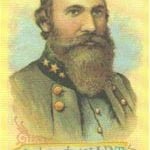
“Jeb” Stuart was probably the most brilliant cavalry commander of either side during the war. Fearlessly brave, his force proved to be a constant thorn in the North’s side. Their ability to appear and strike unexpectedly caused havoc to the North’s lines of communication. His skilful use of his men, whether as scouts, raiders or pickets, cannot be underestimated. On 10th May 1864 however, at Yellow Tavern near Ashland, in the Wilderness, he was badly wounded. Taken from the field of battle, every effort was made to save him, but on the morning of the following day he died. His loss, when it came, was one that the South could ill afford.
